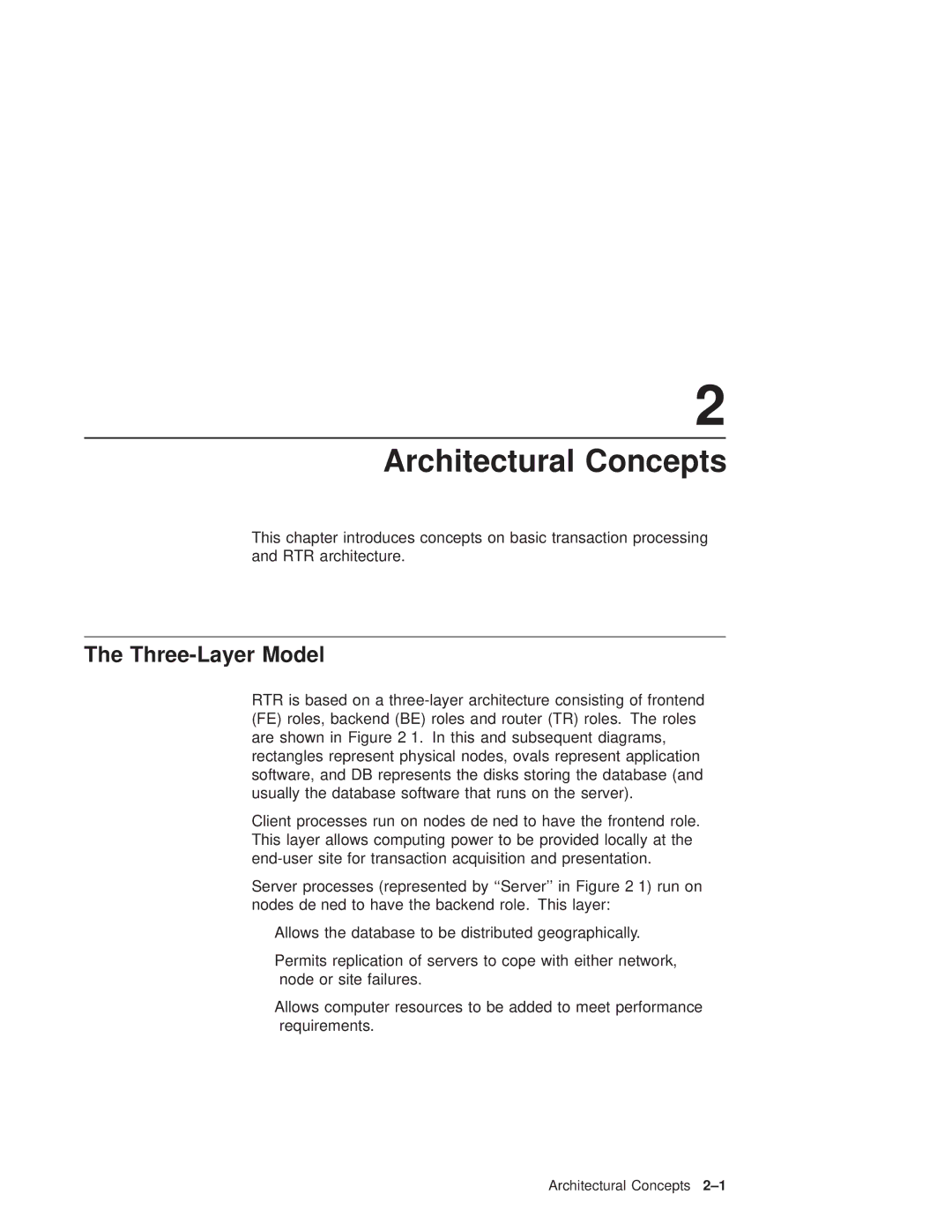
2
Architectural Concepts
This chapter introduces concepts on basic transaction processing and RTR architecture.
The Three-Layer Model
RTR is based on a
Client processes run on nodes defined to have the frontend role. This layer allows computing power to be provided locally at the
Server processes (represented by ``Server'' in Figure
•Allows the database to be distributed geographically.
•Permits replication of servers to cope with either network, node or site failures.
•Allows computer resources to be added to meet performance requirements.
Architectural Concepts
